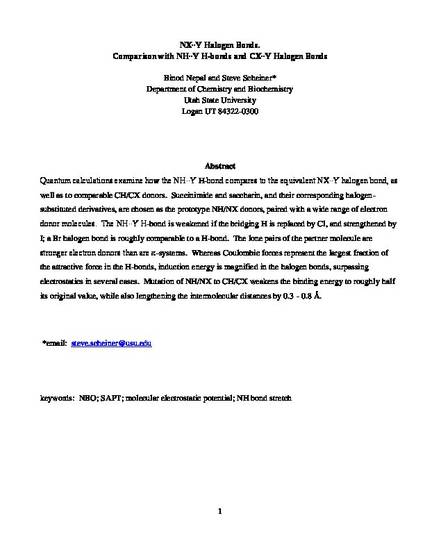
Quantum calculations examine how the NH∙∙Y H-bond compares to the equivalent NX∙∙Y halogen bond, as well as to comparable CH/CX donors. Succinimide and saccharin, and their corresponding halogen-substituted derivatives, are chosen as the prototype NH/NX donors, paired with a wide range of electron donor molecules. The NH∙∙Y H-bond is weakened if the bridging H is replaced by Cl, and strengthened by I; a Br halogen bond is roughly comparable to a H-bond. The lone pairs of the partner molecule are stronger electron donors than are π-systems. Whereas Coulombic forces represent the largest fraction of the attractive force in the H-bonds, induction energy is magnified in the halogen bonds, surpassing electrostatics in several cases. Mutation of NH/NX to CH/CX weakens the binding energy to roughly half its original value, while also lengthening the intermolecular distances by 0.3 - 0.8 Å.
